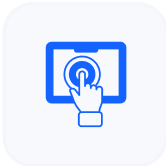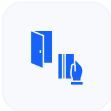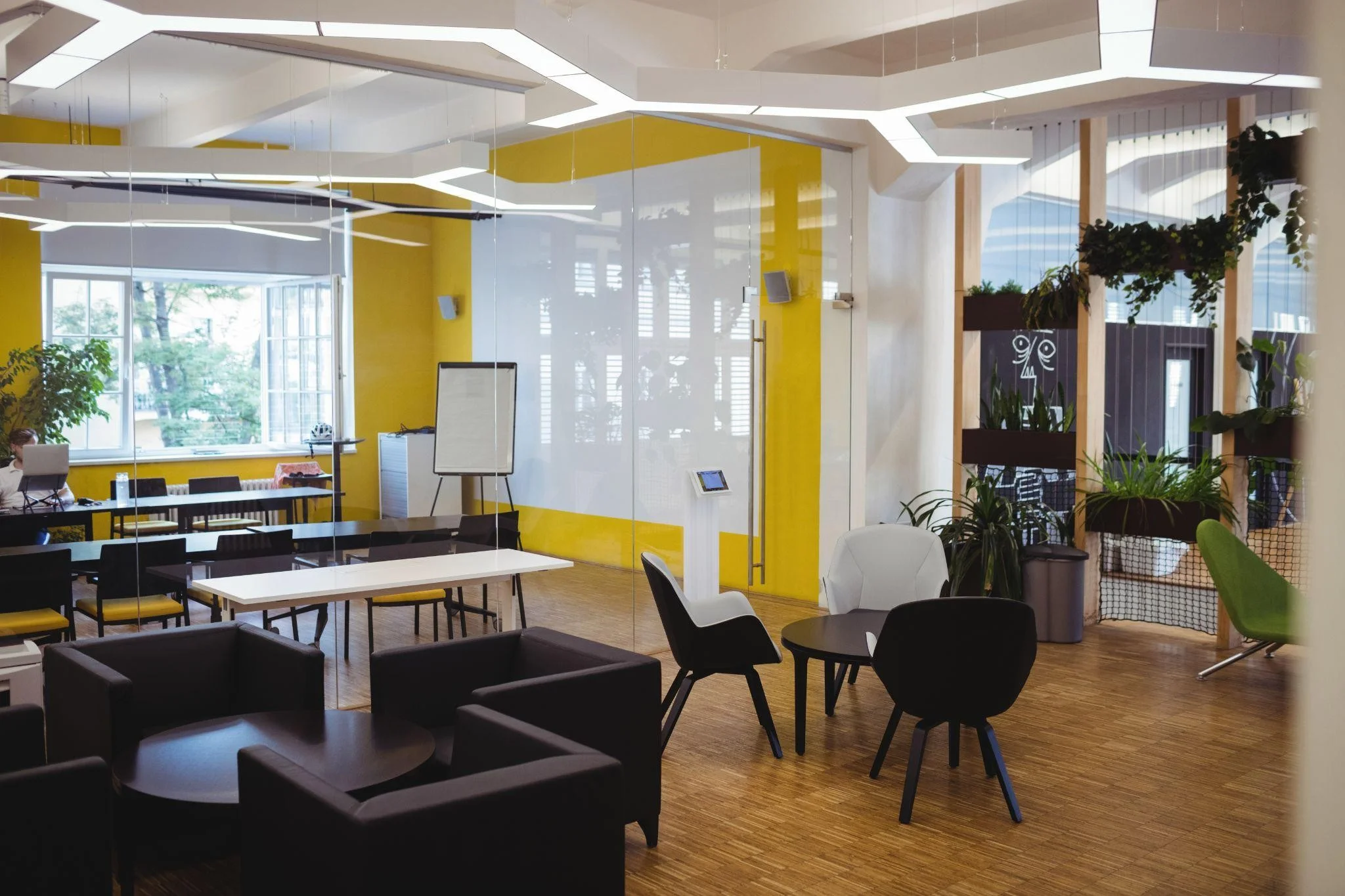
The Complete Guide to Workplace Analytics for Modern Offices
Work environments are now continuously evolving. Understanding how employees interact has become even more crucial. Thanks to workplace analytics, companies and organizations can now analyze data on behaviors, space usage, and collaboration patterns to reveal how work truly happens.
In this blog, see how workplace analytics enhances modern workplaces. Discover how it reshapes office dynamics, reducing inefficiencies and fostering a more responsive work environment.
What is Workplace Analytics?
Workplace analytics involves gathering and interpreting data on how employees interact with one another in a work setting. It can also include their utilization on workspaces and office resources.
With hybrid and remote setups becoming the go-to work setups nowadays, workspace analytics plays a crucial role in them. It helps offices and organizations manage their coworking spaces, office space and resources effectively. Also, it guides on how to improve work productivity while reducing inefficiencies.
Why is Workplace Analytics Important?
Workplace analytics is not just about collecting data. It is about making offices more efficient, reducing unnecessary costs, and improving the overall employee experience. By understanding how space and resources are used, organizations can save money, design better office layouts, and keep employees more engaged. In today’s hybrid work environment, it also helps companies maintain a balance between flexibility for employees and accountability for the business.
How Does Workplace Analytics Work?
Workplace analytics works in a step-by-step process. It starts with collecting data, then analyzing it, and finally using it to make better decisions.
1. Data Collection
The first step is to gather information about how employees and resources are being used. This data can come from different sources such as:
Sensors and IoT devices that track movement and occupancy in rooms or desks.
Access control systems like ID card swipes or digital check-ins.
Desk booking and meeting room apps that show space usage.
Surveys and feedback forms that reflect employee experiences.
Collaboration tools such as Slack, Microsoft Teams, or Outlook calendars that show how teams interact.
2. Data Analysis
Once the data is collected, it is processed and analyzed. This step often uses:
Dashboards and visual reports to present data in an easy-to-read format.
Artificial Intelligence (AI) and Machine Learning (ML) to identify patterns and predict future needs.
Comparisons over time to see how space usage or employee behavior changes.
3. Turning Insights into Action
The most important part of workplace analytics is using the data to improve the office. For example:
If meeting rooms are always full, the company might add more collaboration spaces.
If desks are underused, the layout may be redesigned to save space.
If employees report stress or discomfort, changes can be made to lighting, temperature, or noise levels.
Types of Workplace Analytics
Understanding workplace analytics helps organizations answer multiple questions, such as why the issue occurred and what the next steps should be.
Each of these questions requires a different type of analysis. So here are the four core types of workplace analytics.
1. Descriptive Analytics
It summarizes or provides an overview of previous data to understand what happened. It helps identify workspace utilization and create a baseline report.
Example: “The total hours of the Meeting Room A were occupied 84 times last month, with an average occupancy of 65%.”
2. Diagnostic Analytics
It explores or investigates the causes of particular events that occurred. It is helpful in problem-solving and supporting management changes.
Example: “Why did the desk bookings by the marketing team drop 40% after the rearrangement of the office?”
3. Predictive Analytics
It uses data to predict future trends. This type is commendable for capacity planning and budgeting. By applying advanced predictive analytics techniques, businesses can anticipate demand shifts, resource requirements, or financial outcomes more accurately.
Example: “Based on current growth, we’ll reach full desk capacity by Q2 next year.”
4. Prescriptive Analytics
Provides recommendations based on data to optimize future outcomes. It is helpful for scenario planning and making proactive improvements.
Example: “Suggest reducing underutilized space and converting it into shared work pods.”
Unlock Smarter Workspaces with Workplace Analytics
Optimize space, improve productivity, and create a workplace that adapts to your people.
Who Uses Workplace Analytics?
Workplace analytics is not just for one department. Different teams across an organization use it for different purposes.
1. Human Resources (HR)
HR teams use analytics to:
Measure employee engagement and satisfaction.
Understand work patterns, such as remote vs. in-office time.
Improve policies to support employee well-being.
2. Facility Managers
Facility managers are responsible for office spaces and resources. They use analytics to:
Track room and desk usage.
Identify areas that are underutilized.
Plan office layouts and future space needs.
3. IT Teams
IT departments play a key role in supporting digital tools. They use analytics to:
Monitor how employees use platforms like Teams, Slack, or Zoom.
Identify if certain tools are underused or creating bottlenecks.
Ensure systems are integrated and running smoothly.
4. Executives and Business Leaders
Top management uses workplace analytics for strategic decisions. They rely on data to:
Save costs by removing wasted resources.
Improve overall productivity and efficiency.
Plan business growth and future office expansions.
Key Metrics to Track with Workplace Analytics
To understand the power of data analytics for a workplace, it is essential to focus on the right metric. Here is a comprehensive decision-making guide regarding office space utilization, employee experience, and performance.
a. Meeting Room Analytics
One of the most common starting points for adopting companies is the meeting room utilization. Spaces are the most valuable and often misused in the modern office. Understanding how these spaces are utilized is crucial for enhancing the employee experience and optimizing the company’s performance.
Track the following:
- The room’s occupancy, including which rooms are used most frequently, and whether these rooms are being utilized as intended.
- The frequency of ghost bookings or no shows.
- Identify overbooked rooms and underutilized spaces.
b. Desk Booking Analytics
In a hybrid setup, the use of permanent desks has declined. Track the desk usage by answering the following questions:
- How many desks/zones are being occupied daily?
- Are there any patterns of popularity in the desk being used based on department or day of the week?
- Is there a preference among employees for hot desking or a dedicated desk?
That way, the office can see how they can improve or maintain their desk booking setup.
c. Service and Reception Analytics
This is often overlooked, but it has a significant impact on the first impression of your office. These are the reception desks, visitor check-in stations, and waiting areas. Here are the things that you might need to track:
- The number of visitors during the time of day
- The wait times at the reception
- The efficiency of the reception staff
It will help the administration understand how to avoid long waiting times in their reception area, especially for visitors.
d. Employee Productivity and Performance Tracking
Although it is difficult to measure productivity purely on analytics, offices can also gain insights by focusing on these:
- Tracking the usage of collaborative platforms such as Slack and MS Teams
- The frequency of meetings and their durations
- Feedback using surveys about the workspace
Utilize employee analytics to develop an ideal workplace culture, incorporating events and activities that promote employees’ individuality and foster meaningful interactions.
e. Workforce Effectiveness
Evaluate how effectively employees perform in terms of their time, environment, and collaborative dynamics. It is essential to measure the outcome, not just effort.
These are evaluating outputs that correspond to the following:
- Tracking the times spent in the office vs. working remotely
- Consider the environmental factors, such as noise, lighting, and temperature
- Work pattern trends by team, location, or role
Use this data to help managers align work environments and determine whether certain teams collaborate better in specific areas. Additionally, it helps provide context during performance reviews.
f. Office Activity Evaluation
This metric provides real-time evidence on how the office’s physical workspace is used. Understand the employees’ movement patterns and help optimize workspace layouts by tracking the following:
- Which zone has the most foot traffic
- Determine congestion points
- Usage heatmaps to identify underused zones
- Identify underutilized zones or dead zones
Utilizing these data can help optimize office amenity placements and also support energy efficiency.
What are the Benefits of Workplace Analytics?
It Helps in Formulating Data-driven Decisions
To eliminate the need for relying on hunches or outdated policies, real-time data serves as a guide whether you are in HR, facilities, or IT. Data-driven decisions ensure that every change you make is measurable, justifiable, and has a meaningful impact.
Real-time data helps:
- Guiding layout decisions that reduce wasted space
- Management in shaping a workplace culture and creating policies
- In monitoring the impact of the changes and giving them a chance to adapt quickly.
It Optimizes Space Management
Optimized space management involves ensuring that your space is utilized effectively by tailoring it to the specific needs of your employees. It is essential to ensure that every part of the office serves a clear purpose. To optimize space management, you need to:
- Identify which areas need to be downsized
- Make sure the space allocated is based on the real needs of the employees
- Eliminate unused or underutilized areas.
It Promotes Better Workplace Experiences
A good office is not just about its location or its furniture; it is about creating a space where employees want to work. When employees feel that their workspace is supporting their needs, they are likely to be more productive and engaged.
Employee experience analytics helps you do that by gathering data on employee behavior and translating it to provide insights that may be beneficial to the company, whereas:
- Employees can find a space that matches their needs and working styles, improving employee satisfaction.
- Reduce daily issues like booking spaces or accessing services.
- Help reveal access issues that employees face, helping create a more inclusive and equitable workplace.
Real-World Use Cases of Workplace Analytics
Workplace analytics is already being used by many organizations to improve the way they work. Here are a few examples that show its impact in real situations.
Reducing Wasted Office Space
A global IT firm found that many of its meeting rooms were often empty. By using workplace analytics, they were able to identify these underused areas and improve these office space by converting them into collaboration pods. This change helped them cut down wasted office space by 25 percent while giving employees more useful places to work together.
Improving Coworking Memberships
A coworking company tracked how desks were being booked throughout the day. The data revealed the busiest hours and the times when the office was quieter. With this insight, they designed flexible membership plans that matched real usage patterns, making their spaces more appealing to freelancers and part-time workers.
Planning Future Office Expansions
A financial services company used predictive analytics along with workforce data to understand team growth. The results showed when they would run out of space, allowing them to plan new office expansions in advance. This proactive approach kept their workplace comfortable and avoided overcrowding.
Common Challenges in Workplace Analytics
While workplace analytics offers clear advantages, organizations often discover a few roadblocks along the way. Addressing these challenges early ensures a smoother implementation and better results.
1. Data Privacy Concerns
Employees sometimes worry that workplace analytics means constant surveillance. If they feel like every movement is being tracked, trust can erode quickly. To overcome this, companies need to be transparent about what data is collected, how it is used, and why it benefits employees as well as the organization. Data should remain anonymized and focused on collective trends, not on monitoring individuals.
2. Employee Resistance
New tools or systems often bring hesitation. Employees may ask, “Will this change how I work?” or “Is this just more micromanagement?” Resistance usually comes from uncertainty. That’s why clear communication, training sessions, and early success stories are important. When employees see how analytics helps them—like finding available desks faster or improving meeting room bookings—they’re far more likely to embrace it.
3. Integration Issues
Not all workplace analytics software integrates smoothly with existing systems such as Outlook, Google Calendar, Slack, or HR tools. A lack of compatibility can cause frustration and limit adoption. To avoid this, businesses should look for platforms that offer strong integrations, open APIs, and user-friendly dashboards that work seamlessly with the tools teams already use daily.
4. Misinterpretation of Data
Data on its own doesn’t always tell the full story. For example, a meeting room showing “low usage” might actually be reserved for important executive sessions. Without context, raw numbers can lead to the wrong conclusions. This is why analytics should always be paired with human insight and decision-making. Data provides the evidence, but people provide the understanding.
How to Find Workplace Analytics Software That Meets Your Needs
Choosing the right workplace analytics software is crucial, as it can significantly impact the success of your workplace.
Ensure that the software you choose supports your needs and is easily adaptable to your requirements. Here are a few key factors to consider:
All-in-One Platform vs. Point Solutions
All-in-one refers to combining multiple functions into a single system. In contrast, point solutions focus on a specific problem or concentrate on a single function.
All-in-one Platform
- Pros: centralized data, easier alignment across teams, easier user experience
- Cons: may lack specialized features
Point Solutions
- Pros: has specialized features, customizable to the specific needs
- Cons: more complex management, hard to unify data across teams
Choose All-in-One if you prefer a centralized view of all workplace data. Meanwhile, you can opt for Point Solutions if you prefer in-depth functionality in a specific area.
Scalability for Growing Businesses
Workplace changes are inevitable. Select a workplace analytics software that can scale with the company’s growth and expansion. That way, it ensures that your existing system will not break or slow down as your business grows. Look for platforms that offer:
- Support in handling multiple locations, such as having data in various offices in different countries, in one single dashboard
- Easily accessible by point persons, such as administrators, HR, IT, and other executives.
Integration with Existing Tools
The analytics system should be seamlessly stackable with your current technology and should provide a smooth user experience. Key integrations to see are:
- Compatible with tools like Microsoft Outlook, Google Calendar, and messaging platforms like Slack and Microsoft Teams
- Platforms with open APIs that will help save you time and reduce IT issues.
Easy Adoption and Team Buy-In
A powerful analytics platform can still be useless if it is too difficult to use, so you should choose solutions that are:
- Highly intuitive and user-friendly, even non-technical staff will be able to use it.
- Customizable in a way that users can only see what is relevant to them.
- Supported with the proper tutorials and onboarding support.
Workplace Analytics Metrics and the Future of Work
Hybrid work and other office trends are rapidly reshaping the modern office; organizations can no longer rely on traditional methods or outdated assumptions when forming policies. That’s why workplace insights is the new blueprint.
Workplace data analytics now fills in the gap. Equipping organizations with flexible environments that adapt to the needs of employees, which also supports their well-being.
Conclusion
Workplace analytics helps organizations organize and propel themselves further in creating a more innovative and people-centered environment by utilizing data-driven insights and fostering a workplace that supports the needs of employees now and in the future.
Whether you’re a small business or a large company, the right tool will lead you to success.
FAQs
1. What is workplace analytics and why is it important?
Workplace analytics is the process of collecting and analyzing data on how employees use spaces, interact, and perform in the workplace. It helps organizations make data-driven decisions, optimize resources, improve employee experiences, and adapt to hybrid or remote work trends.
2. How does workplace analytics benefit hybrid and remote work setups?
By tracking desk bookings, meeting room usage, and employee collaboration patterns, workplace analytics helps organizations optimize space, reduce costs, and ensure employees have the right resources whether they work remotely, in the office, or in a hybrid arrangement.
3. What key metrics should companies track with workplace analytics?
Important metrics include meeting room utilization, desk booking patterns, reception and visitor flow, employee productivity, workspace activity levels, and environmental factors like noise and lighting. Tracking these helps improve efficiency and employee satisfaction.
4. How do I choose the right workplace analytics software?
Look for software that meets your organization’s needs, scales with growth, integrates with existing tools (like calendars and messaging platforms), and is easy to use. Decide whether you prefer an all-in-one solution for centralized data or specialized point solutions for specific functions.
5. Can workplace analytics improve employee experience and engagement?
Yes. By using analytics to understand employee needs and preferences, companies can create workspaces that support productivity, collaboration, and well-being. This leads to higher satisfaction, fewer daily frustrations, and a more inclusive work environment.















































 Support
Support  Demo
Demo  Blog
Blog 
